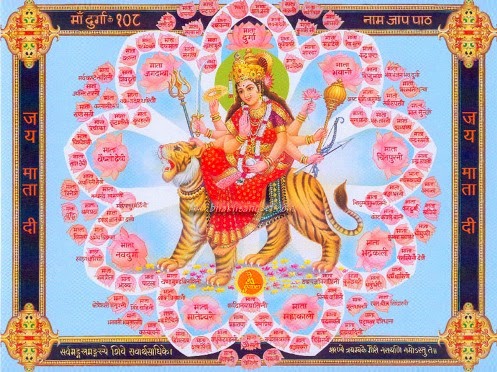Sati, the consort of Shiva was the
daughter of Daksha Prajapati a descendant of Bramha. Sati had married
Shiva against the wishes of her father. Daksha organised a sacrifice and
the attendees came from various parts of the universe. He invited all
of the gods and goddesses except his son in law Shiva. Against Shiva's
wishes, Sati attended this sacrifice and was insulted by her father and
cousins. Unable to bear this insult, Sati immolated herself.
Enraged at the insult and the injury, Shiva destroyed Daksha's sacrifice, cut off Daksha's head and when pleaded by other gods, replaced it with that of a goat and restored him to life. Still berserk with grief, he picked up the remains of Sati's body, and danced the dance of destruction throughout the Universe. The other gods intervened to stop this dance, and then the Sudarshan Chakra of Vishnu cut through the corpse of Sati, whose various parts of the body fell at several spots all through the Indian subcontinent and formed the sites of what today are known as Shakti Peethas today.
Shiva was finally pacified when the last piece fell off from his shoulder. Narayana revived sati as Uma for a new life. Ever since peace was restored, Uma, with her children, Ganesh and Kartick and with her two 'Sakhis' - Jaya and Bijaya, comes to visit her parent's home each year during the season of 'Sharat' or autumn when Durga Puja is celebrated.
Enraged at the insult and the injury, Shiva destroyed Daksha's sacrifice, cut off Daksha's head and when pleaded by other gods, replaced it with that of a goat and restored him to life. Still berserk with grief, he picked up the remains of Sati's body, and danced the dance of destruction throughout the Universe. The other gods intervened to stop this dance, and then the Sudarshan Chakra of Vishnu cut through the corpse of Sati, whose various parts of the body fell at several spots all through the Indian subcontinent and formed the sites of what today are known as Shakti Peethas today.
Shiva was finally pacified when the last piece fell off from his shoulder. Narayana revived sati as Uma for a new life. Ever since peace was restored, Uma, with her children, Ganesh and Kartick and with her two 'Sakhis' - Jaya and Bijaya, comes to visit her parent's home each year during the season of 'Sharat' or autumn when Durga Puja is celebrated.























